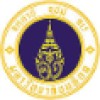Effect of tDCS on Motor Functions and Brain Activity in Acute Stroke Patients
Stroke, Acute

About this trial
This is an interventional treatment trial for Stroke, Acute
Eligibility Criteria
Inclusion Criteria:
- Age between 18-75 years old
- First-ever acute ischemic stroke of anterior circulation system (anterior cerebral artery or middle cerebral artery territory)
- Stroke onset from 2-10 days
- Having a stable medical condition
- Alert of consciousness
- Able to follow commands
- Modified Rankin Scale (mRS) ≤ 4
Exclusion Criteria:
- Hemorrhagic stroke
- Recurrent stroke
- Presence of other neurological disorders such as unilateral neglect
- Presence of metal implantation, intracranial shunt, cochlear implantation or cardiac pacemakers
- Presence of opened wound or infectious wound around scalp
- History of epilepsy or any neurological antecedent or unstable condition which can lead to seizure
- Body Mass Index (BMI) > 30 kg/m2
- Received hormonal treatment
- Ischemic heart disease and peripheral vascular ischemia
- Last stage of kidney disease and liver disease
Sites / Locations
- Siriraj Hospital
Arms of the Study
Arm 1
Arm 2
Experimental
Active Comparator
Anodal-tDCS & PT
Sham-tDCS & PT
Anodal transcranial direct current stimulation (tDCS) will be applied for 20 mins before conventional physical therapy (about 1 hours). Anodal on the motor area (M1) of affected hemisphere, Cathodal on the supraorbital area of unaffected hemisphere. Current intensity is fixed at 1.5 mA and current will flow continuously. Physical therapist will give an intervention program base on the same basic conventional physical therapy treatment. The scope of intervention is administered to improve motor functions and brain activity.
Anodal transcranial direct current stimulation (tDCS) will be applied for 20 mins before conventional physical therapy (about 1 hours). Anodal on the motor area of affected hemisphere, Cathodal on the supraorbital area of affected hemisphere. Physical therapist will give an intervention program base on the same basic conventional physical therapy treatment. The scope of intervention is administered to improve motor functions and brain activity.
Outcomes
Primary Outcome Measures
Secondary Outcome Measures
Full Information
1. Study Identification
2. Study Status
3. Sponsor/Collaborators
4. Oversight
5. Study Description
6. Conditions and Keywords
7. Study Design
8. Arms, Groups, and Interventions
10. Eligibility
12. IPD Sharing Statement
Learn more about this trial
